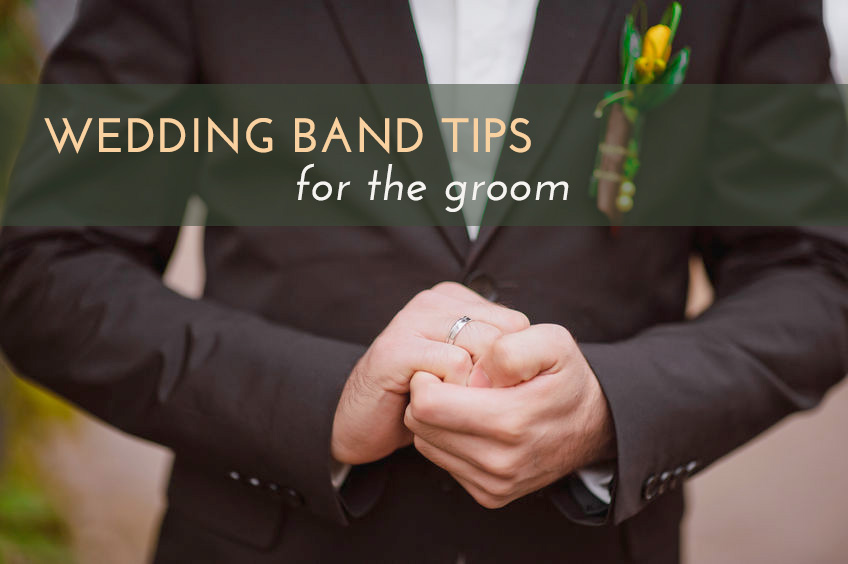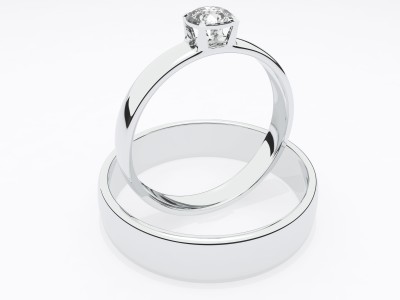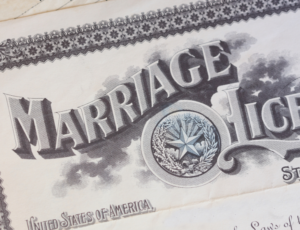 When we talk about shopping for wedding bands, thoughts invariably turn to finding the perfect ring for the bride. Fair enough, I suppose. Men have been buying engagement rings and wedding bands for their brides for thousands of years.
When we talk about shopping for wedding bands, thoughts invariably turn to finding the perfect ring for the bride. Fair enough, I suppose. Men have been buying engagement rings and wedding bands for their brides for thousands of years.
Ancient Egyptian brides were given gold or silver bands to be worn around the third finger of the left hand as a symbol of the marriage bond. It is literally an age old history with many changes along the way.
Today, of course, the bride is not the only one to receive a wedding ring on the big day. In most modern wedding ceremonies the exchange of rings sees a wedding band slipped on the groom’s finger, and he will wear and cherish that ring for years to come. So, instead of focusing on the bride’s rings, let’s talk a bit about the groom’s wedding band. Here are a few simple tips to help you find the perfect wedding band for the groom.
1. Setting a Budget
It isn’t romantic, but before you go shopping for a wedding ring (for the bride OR for the groom) you have to set a realistic budget. Determining how much you can afford to spend before you start hitting the jewelry shops makes the process that much easier, and eliminates the frustration of falling in love with a wedding band that is simply beyond your budget.
As a general rule of thumb, the target cost of a groom’s ring is 1/5 of what has been spent on the bride’s engagement and wedding ring set. Of course, there are no hard and fast rules, and if your budget can stretch to it the sky’s the limit.
2. The Groom’s Lifestyle
When it comes to choosing the perfect groom’s ring, it is important to consider his lifestyle. If the groom has a labor intensive, hands on, job you will want to choose a metal that is sturdy enough to stand up to repeated abuse without being easily damaged. Similarly, if the groom’s major hobbies are woodworking and playing football on the weekends, you’ll want to pick a metal that can take some punishment. Use the following list as a rough guide to help you choose the right metal for your groom’s wedding band:
- Silver – Silver is a popular option for groom’s rings, because it’s understated and less expensive than other metals. However, silver is not very durable, so if the ring is likely to take some abuse it’s best to look for something stronger.
- Gold – Lower carat gold is more durable than higher karat gold. For a groom’s ring, 14-karat is usually recommended.
- Platinum – Platinum is fairly durable, but it is also fairly expensive. Platinum wedding bands also tend to be rather heavy, and some men can find them uncomfortable.
- Titanium – Titanium is extremely durable. It is also lighter than gold or platinum, and 100% hypoallergenic. Titanium is a good choice for a groom’s ring, being lightweight and understated.
- Tungsten – Tungsten is becoming increasingly popular for groom’s rings. Its lightweight, durable, and affordable. However, it is important to choose a tungsten carbide alloy so the ring will be more resistant to scratches.
3. The Groom’s Taste and Personality
The groom will be wearing his wedding band for years to come, so it is vital that it matches his taste and personality. Many men prefer to wear plain wedding bands. They’re understate and suitable for all occasions. That being said, a simple stone can add a bit of pizzazz to a groom’s ring without overpowering it. A single diamond or ruby adds a bit of style and class, while keeping the ring suitable for everyday wear. Men with strong outgoing personalities might prefer something with a bit more flash, perhaps some filigree work along the shank or additional highlighting stones. Ultimately, it is a matter of taste, and you should take your time to find the style that best matches the groom’s personality.
4. The Bride and Groom’s Rings Should Compliment Each Other
 Just like the bride and groom themselves, their rings should work together. The styles, metals, and choice of stones, should be harmonious and should be complimentary.
Just like the bride and groom themselves, their rings should work together. The styles, metals, and choice of stones, should be harmonious and should be complimentary.
Now, this is not to say that the groom’s ring should simply be the male version of the bride’s wedding band, but they should look good together and suggest a certain aesthetic harmony.
5. Professional Sizing
Professional sizing is a must, and even if the groom thinks he knows his ring size it is always a good idea to have it confirmed. Most jewelers will size rings for free, so there is no reason to skip this step. For brides who want the groom’s ring to be a surprise on the big day, secretly borrow (steal) one of your fiance’s rings and take it to your jeweler so they can match the size.
6. When to Buy the Ring
You should plan to purchase the groom’s ring at least two months before the wedding. This will allow enough time to fix any potential problems (ring size, engraving mistakes, etc), and will ensure that the groom’s wedding band is finished and ready well before the big day.
7. Who Buys the Groom’s Ring
Again, there’s no hard and fast rules here. It’s not unusual for the bride to buy the groom’s wedding band, just as the groom buys her engagement ring and wedding bands. That being said, you are in this together, and there’s no reason you both shouldn’t contribute to the purchase of all of the wedding bands. In this case, there is no wrong answer as long as you both agree.
Today, the groom’s ring has become as large a part of the wedding ceremony as the bride’s wedding band. While it may not get as much attention in bridal magazines and wedding blogs, it is just as important to get it right. These few tips should help make shopping for the groom’s wedding ring easier, and less stressful. If you give yourself plenty of time, and pay attention to some key points, you will easily find a wedding ring that the groom will love and cherish for years to come.




